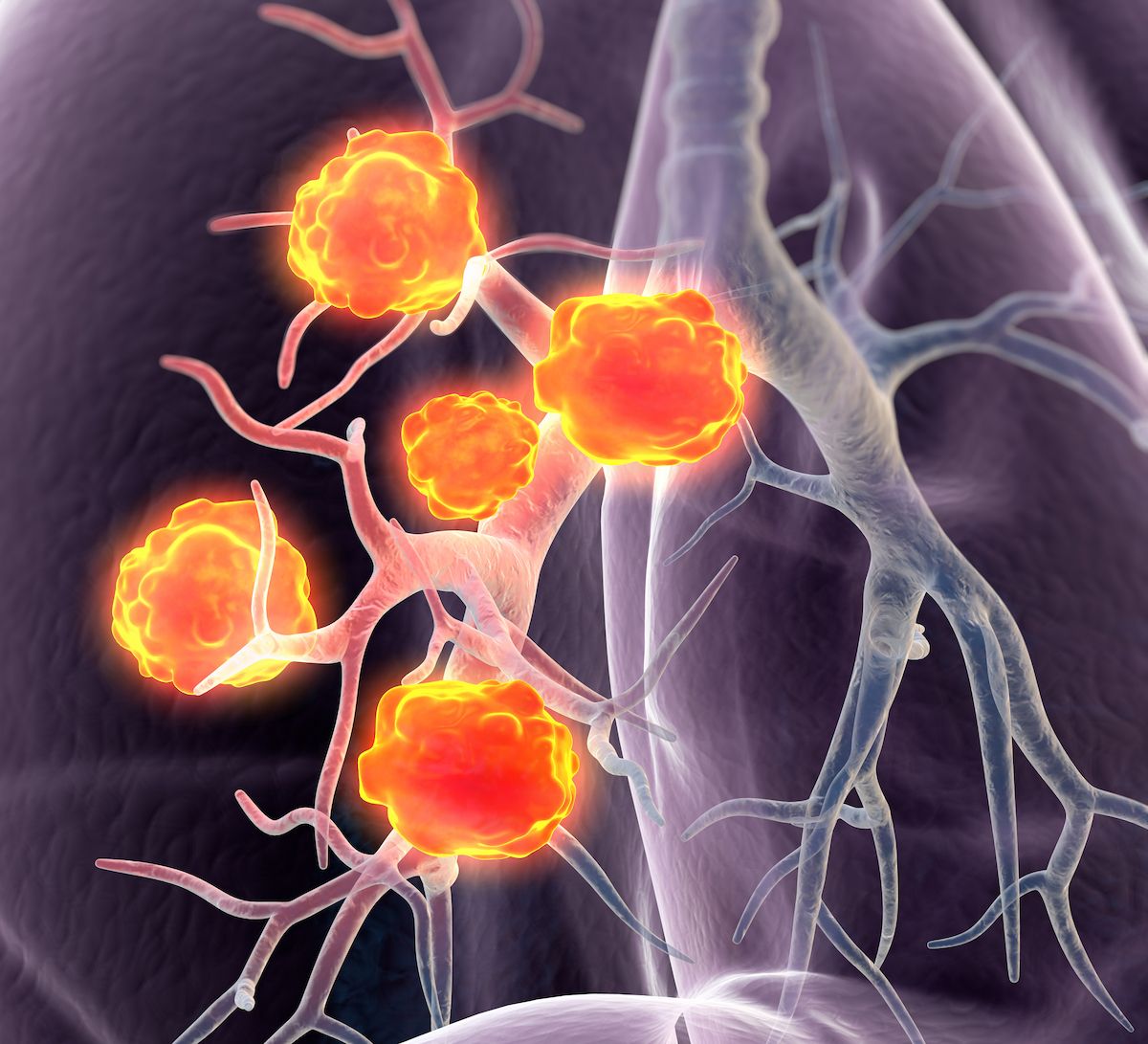Sunvozertinib Yields Tolerability, Efficacy in EGFR+ NSCLC
Sunvozertinib shows a similar safety profile to other EGFR tyrosine kinase inhibitors in the treatment of EGFR wild-type non–small cell lung cancer in the WO-KONH6 study.
“What's unique about sunvozertinib is its ability to inhibit all kinds of mutational subtypes as well as their locations. It is different from other inhibitors,” said Mengzhao Wang, MD, of Peking Union Medical College, during the ASCO presentation.

Treatment with the investigational EGFR exon20 insertion inhibitor sunvozertinib (DZD9008) demonstrated anti-tumor activity and tolerability in patients withnon–small cell lung cancer (NSCLC) harboring an EGFR exon20 insertion mutation, according to findings from the phase 2 WO-KONH6 study (NCT05712902) presented at the 2023 American Society of Clinical Oncology (ASCO) Annual Meeting.
Findings showed that sunvozertinib achieved an objective response rate (ORR) of 60.8% (95% CI, 50.4%-70.6%) when administered at 300 mg once daily. The ORR consisted of partial responses (PRs) in 60.8% of patients, stable disease (SD) in 26.8%, and progressive disease (PD) in 6.2% for a disease control rate (DCR) of 87.6% (95% CI, 79.4%-93.4%). These results were irrespective of age, sex, smoking status, baseline brain metastases, number of prior lines of therapy, mutation subtypes, and prior PD-1/PD-L1 status.
“What's unique about sunvozertinib is its ability to inhibit all kinds of mutational subtypes as well as their locations. It is different from other inhibitors,” said Mengzhao Wang, MD, of Peking Union Medical College, during the ASCO presentation.
Ninety percent of patients treated with sunvozertinib had tumor shrinkage, and tumor response was seen in patients who had brain metastases at baseline or after receiving amivantamab (Rybrevant). The anti-tumor efficacy shown in the overall population carried over into the subgroup populations, including patients with helical insertion (n = 2), near loop classification (n = 71), and far loop classification (n = 24). Patients with helical classification had an ORR of 100% and DCR of 100%, and those with near loop classification had an ORR of 62.0% and a DCR of 88.7%. In the far loop classification group, the ORR was 54.2% and the DCR was 83.3%.
The median duration of sunvozertinib treatment was 7.0 moths, and the longest duration of treatment was 19.2 months. At a median follow-up of 5.6 months among sunvozertinib responders, 64.4% were still responding. The median duration of response was not reached, but the longest DOR for a patient was over 11.2 months. The patient was still responding at the time of data cutoff.
Sunvozertinib showed a similar safety profile to other EGFR tyrosine kinase inhibitors. Most of the adverse events (AEs) observed in the study participants were grade 1 or 2. The most common any-grade treatment emergent AEs (TEAEs) were diarrhea (67.3%), blood CPK increase (57.7%), rash (53.8%), and anemia (49.0%). The most common ≥ grade 3 TEAEs were blood CPK increase (17.3%), diarrhea (7.7%), and anemia (5.8%).
WON-KONG6 was a phase 2, single-arm, multicenter study that included patients with locally advanced or metastatic NSCLC harboring confirmed EGFR exon20 insertion in the tumor tissue. All patients enrolled had 1 to 4 prior lines of systemic therapy, and their disease progressed on or after platinum-based chemotherapy. The primary end point of the study was ORR by independent review committee (IRC) assessment. The secondary end points assessed in the study were DOR by IRC assessment, ORR, progression-free survival, and tumor size changes per investigator assessment, as well as overall survival, safety/tolerability, and pharmacokinetics.
Overall, 97 patients were enrolled in the study. At baseline, the median age of the patient population was 58 years (range, 29-79). The cohort was predominantly female (59.8%), and most patients (67%) did not have a history of smoking. Baseline brain metastases were observed in 32.0% of patients. Regarding molecular subtypes, 39.2% of patients had 769_ASV mutations, 17.5% had 770_SVD mutations, and 43.3% of patients belonged to other molecular subgroups.
The median number of prior anti-cancer therapies in the study population was 2 (range, 1-3). All patients had received platinum-based chemotherapy as a prior treatment, and 26.8% received an EGFR TKI, 35.1% received a PD-1/PD-L1 inhibitor, 59.8% were given anti-VEGF therapy, and 16.5% received other forms of therapy.
According to Wang et al, there is a possibility of sunvozertinib becoming a treatment option for patients with NSCLC and EGFR exon20 insertion. Continued investigation of the agent will be conducted in the WU-KONG28 trial (NCT05668988), a phase 3, randomized, multinational study of sunvozertinib vs platinum-based chemotherapy as frontline treatment for EGFR exon20 insertion-positive NSCLC.
REFERENCE
Wang M, Fan Y, Sun M, et al. Sunvozertinib for the treatment of NSCLC with EGFR Exon20 insertion mutations: The first pivotal study results. J Clin Oncol. 2023; 41 (suppl 16):9002-9002. doi: 10.1200/JCO.2023.41.16_suppl.9002